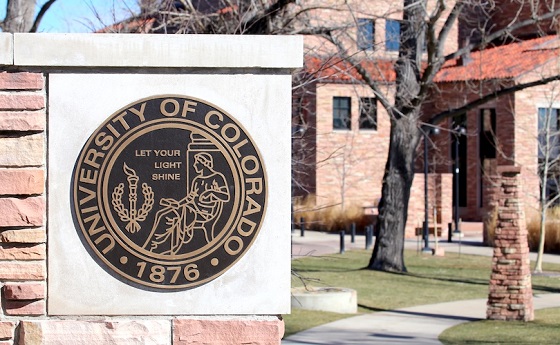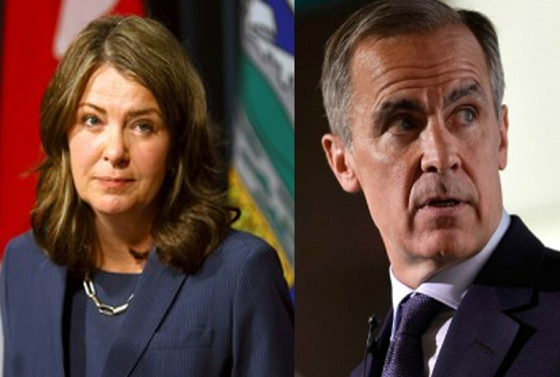Economy
The wall of death for western economies
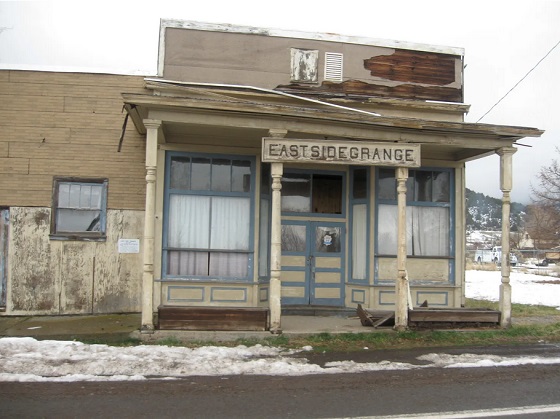
From the Frontier Centre for Public Policy
This is an easy fix – you just have to demand it
When I drove 20,000 miles through rural America a few years back, I was struck by the dilapidated nature of, well, just about everything. The towns were rundown, there were thousands of abandoned farms and ranches and family houses. Sidewalks broken, every other shop was abandoned. Fields ran untended, forests filled with brush and fire ladders, hangers-on in trailers with a junkyard dog and rifle racks on trucks. Hunting was a necessity, not a sport.
In sharp contrast I grew up in a country village of 500 surrounded by tidy productive prosperous farms, and we were a going concern with stone and brick buildings, and beautiful crafted family houses, lawns and weirs, a village pond with ducks, mature trees. Some estates, but not vulgar monstrosities like today. Everyone adult chipped in. It was vivid, active, close-connected, multi-generational and I never wanted to leave.
What the hell happened?
I didn’t fully understand until a hydrologist in Denver, retired from a career at the Department of Interior, told me at lunch in an Olive Garden, that in the mid-70’s, the blanket instructions coming down from DC switched from enabling business and development to preventing it. He, in his retirement, had a small ranch and on his wells, four meters from four different federal and state bureaucracies, indicating just how closely he was being surveilled. Over the years, regulations had come down so thick and punitive, near everyone operated in a catch-22 situation. You might hurdle one set of regs, only to discover that your success meant another set of regs cancelled you. It was so irrational it was fiendish, I thought to myself. Now of course, I see it as actually fiendish, the work of evil. The government was deliberately ruining peoples’ lives, drawing them down, impoverishing them, with malice.
The only prosperity to be seen was in the rather splendid buildings of the Army Corps of Engineers, and the palatial “farmhouses” owned by what I came to recognize as government farmers, the ones who had lobbied hard and got all the subsidies. Oh yes, and ethanol plants, one of the first green scams. They ate money.
Last week I was in the provincial capital near me, picking up something in Oak Bay Village, ultra-posh in a villagy Englishy way, half-timbered buildings, human-scaled, friendly. And found it to be in the same state, everything covered in a wash of grey, empty shops, abandoned stores, people shriveled and tired. I used to take my mother shopping there, and since she died, hadn’t had the heart to go back. Therefore I was disturbed, even shocked at the change. If the prettiest street in the prettiest city in Canada, visited by millions of tourists a year was dying….I’m sorry, Leading Indicator.
If the prettiest street in the prettiest city in Canada, visited by millions of tourists a year was dying….I’m sorry, Leading Indicator.
In fact, in Canada, even the food banks are running out of food. Bodies are piling up in mortuaries because people can’t afford to bury their dead. Chronically injured soldiers are offered Medically Assisted Dying in lieu of treatment. MAID has saved the “free” health system $90 million in end-of-life care, since it began. So we have to expect more of that.
A recent report showed the MAID drugs mean you drown to death, but are paralyzed so can’t communicate your distress. That means you can drown for 45 minutes before you actually die – autopsies have proved it. That is how careless our health bureaucracy is. I cannot watch another single mother weeping on TikTok because she cannot feed her children and is always sick. Another once athletic mountain climber sit in a wheelchair detailing her story of neurological pain so intense after vaccine, her husband had to sit with her so she wouldn’t kill herself. Every bureaucracy is killing us.
The U.S. still has the healthiest economy in the world. The thirteen other less rich countries are in per capita recession, which means GDP per person is shrinking: Canada, France, Germany, UK, Australia. Japan just registered a -2% growth rate, but it is already a zombie economy with families living paycheck to paycheck. Like addicts.
It may be that all I have is a hammer but, to me, this is due to impossible green mandates, the choking of energy supplies, the insane expense of green energy infrastructure which doesn’t produce and doesn’t “save money” and above all regulation that means that every job in a small cap public company labors under $50,000 of government ESG mandates. For every $1 you pay your average employee, you pay the government $1.50. That’s before taxes. Not that you have any income to tax. Government is literally eating us alive.
The U.S., according to Bloomberg, is facing a Wall of Death. Or Debt. Bloomberg says 42% of small public companies are losing money; not only that they face a $832 billion wall of debt, $600 billion of which comes due at much much higher interest rates in the next two years.
Let’s be really clear about where that debt came from. It came from people like our Fed Chair who asset stripped all these companies, loaded them with debt, mis-stated their value and sold them on. This is how Jerome Powell made his $50,000,000. He ruined a widget manufacturer. That debt is his dirty-but-not illegal play; his fortune, his I got mine and now I’m in “public service”. Suffer you peons, suffer more. And the dirty profoundly unethical play of all his associates. When Warren Buffet says he has $180 billion in cash because the market is over-valued, that is down to him and his pals loading up every small and medium manufacturer in the U.S. with debt, selling them on, whereupon another pirate buys the company, mis-states its value, borrows a bunch of money against it, raises the price, and sells it on. ALL small cap street profits in the fifteen years come from that criminal activity by our financial elites. Of course the market is over-valued. They over-valued it to steal from it.
The big companies only carry 50% of the debt of small caps. For small caps, the absolute heroes in this story, in the first quarter of 2024, their sales rose .3%, but inflation for that quarter was 1.1%. Bank of America says that small cap earnings will drop by one-third in the next year. Thanks to the miracle of Bidenomics, sales are dead other than the doom spending of hopeless millennials.
In contrast, big companies have gained 14% and big tech stocks earn 90% of all the gains. Where do you think the next play might be? That’s right, tech.
Median priced houses are now worth 7.8 times median income, twice the normal level, that ratio even above the housing bubble of 08. Housing prices are slated to rise 20% in the next year. One in five renters are either skipping meals or selling personal belongings to make rent. Rents will rise double digits in the coming year according to the New York Fed. Millennials have given up, reverting to a nihilistic hand-to-mouth existence.
According to economist Peter St. Onge, who aggregated many of the above states, the first twenty rungs of the ladder have been knocked out.
This is due entirely to the gutting of the heartland, the shipping of manufacturing to the CCP slave state, and the subsequent financialization of the economy. Value is now calculated on the future labor of people whose jobs are being killed off. They are financializing something that is dying. They know it, you know it, the government knows it.
The core reason for the invasion at the border is for immigrants they can pay dirt wages to keep the whole thing going for a few more years. Your kids, your future? Forget about it.
Of course the bankers have a solution. You know they do. It’s not a sensible, compassionate, creative and exciting solution whereby your life and mine is going to get much much better. It is a solution that means your kids and grandkids are going to live in a world wrought with poverty-driven crime, and dying cities and towns. But never mind! The market will make out like a bandit. The secret lies in the fact that 90% of all gains are currently being made by the digital aristocracy.
That will continue and this is how. To make up for destroying production, the government and markets will list you, your house, yard, cars, boats etc., as a federal asset. As well as national parks, conservation areas, wildlife areas, all ecological study zones, and so on. Then they will borrow against it. Everything you own, because of our federal debt, will be theirs.
The secret, obviously lies in the fact that currently 90% of all gains being made by the digital aristocracy,
It’s the only way. We are de-developing; correction, we are being forced to de-develop. We are de-industrializing, and our hard assets, our water, land and mineral resources are being sequestered from use. We cannot use anything to build anything. We won’t even own our houses, our gardens. We will have a senior partner in our financial lives who tells us what we may do and how much oxygen and water and power we may use. We are finished. We are future peasants.
The Play
Earlier this year, American Stewards, a few state governors and a handful of Congress people managed to stop the SEC from installing a rule allowing for the financialization of America’s national parks. But under the radar, because no media does any work whatsoever on this file, the Biden administration has reworked the proposal. Herewith is what is happening in the U.S.
The 2030 Agenda means that 30% of America’s lands have to be turned into a nature preserve by 2030. All those withdrawals from use hold incredible natural wealth and beauty never to be used or seen by Americans. The April 22, 2024, Fact Sheet notes some of the significant land and mineral withdrawals made to help reach 30×30. That wealth could be used by Americans to build cities and companies and full-on effulgent family and community lives. But it is to be locked away. How much is being locked away? The Biden administration estimates that land held privately, one-third of the U.S. to be worth $32 Trillion. So 2030 lands are worth $32 trillion.
So the idea is to lock away at least $32 trillion worth of resources. While people can’t make their rent. While single mothers weep and beg on socials. While people are electing to die because it is too expensive to live. While an entire generation has no hope and is descending into nihilism.
American Stewards reported the two significant Earth Day announcements released from the White House
“The Administration has already protected more than 41 million acres of lands and waters, and President Biden is on track to conserve more lands and waters than any President in history. This includes establishing five new national monuments and restoring protections for three more; creating four new national wildlife refuges and expanding five more; protecting the Boundary Waters of Minnesota, the nation’s most visited wilderness area; safeguarding Bristol Bay in southwest Alaska; and withdrawing Chaco Canyon in New Mexico and Thompson Divide in Colorado from further oil and gas leasing to protect thousands of sacred sites and pristine lands.”
Next, they unveiled a new website, conservation.gov that houses the American Conservation and Stewardship Atlas mapping tool. The Atlas was created to track the progress of 30×30 including the protected status of the lands as well as quantifying natural processes such as photosynthesis and pollination used to manufacture an arbitrary ecosystem service value.”
This is where the digital comes in. All those lands have to be surveilled. All those assets, including you and your house and your car, have to be surveilled. The money that will require installing these surveillance tools will be made by the digital titans, because that’s where the money is, now that lands, resources, labor have been destroyed.
As American Stewards reports: in January of 2023, the White House announced the “National Strategy to Develop Statistics for Environmental – Economic Statistics.” Since then, they have been working to establish a methodology to value the ecosystem services.
There are four accounts: Land, Water, Air Emissions and Economic Activity.
The Pilot Land Account measures the economic activity and total market value for all the land in the United States, 2.3 billion acres. They estimate that at around $100 trillion, which includes the 30% owned by humans.
In essence, the administration is conscripting private citizens’ land to secure the national debt, unbeknown to the American people and Congress. And using common land as well. Common land is owned by the people of the country, not the government and not the Nature Conservancy. It is yours. But, they are developing mechanisms to make it theirs. This is the first step.
The Pilot National Air Emissions Account “measures greenhouse gas emissions associated with specific industries on a national scale.” And you. Your CO2 emissions will be tracked and your allowance measured.
Ten years ago I sat in a rancher’s house deep in Wyoming and he told me that his land would be used as collateral for the National Debt that China holds. I felt dread in the pit of my stomach because I felt instinctively he was right. Subsequently, I don’t know how many people told me that was impossible, I was wrong, he was wrong, crazy.
No baby, we weren’t wrong. They are monetizing all public and private land to pay or support the national debt. And the way they are doing it, is by shutting down economic activity, across the board. We will be a resource to be played, monetized, surveilled and restricted for the profits of the market, and the destructive machinations of the bureaucracy.
And all the money to be made from it is digital. And that money, those resources they are stealing? They belong to us.
In my next article, I will describe in detail the players in this game, how the National Security State, Mossad, the PayPal Mafia, Drexel Burnam heirs, President Trump’s economic advisers, are working to destroy the hope of South and Central America. It is complex, fiendish and fascinating. This series starting today, points out that the Green takeover, mostly surreptitious, is driving the world’s economy into the dirt. It is based on falsified science, and convoluted financial ideas that fail repeatedly. Fix this, and we will be living in a Golden Age.
Elizabeth Nickson is a Senior Fellow at the Frontier Centre for Public Policy. Her studies and commentaries at the Frontier Centre can be accessed here. Follow her on Substack here. Her best-selling book Eco-Fascists can be purchased here.
Business
UNDRIP now guides all B.C. laws. BC Courts set off an avalanche of investment risk
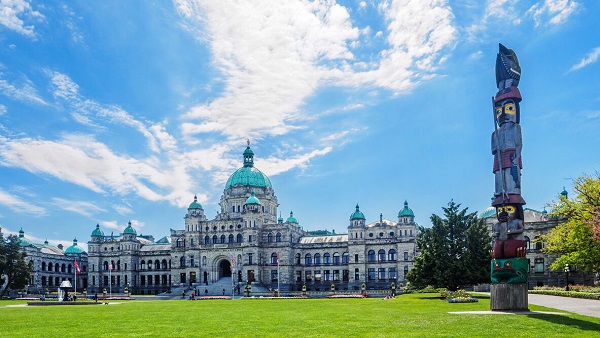
From Resource Works
Gitxaala has changed all the ground rules in British Columbia reshaping the risks around mills, mines and the North Coast transmission push.
The British Columbia Court of Appeal’s decision in Gitxaala v. British Columbia (Chief Gold Commissioner) is poised to reshape how the province approves and defends major resource projects, from mills and mines to new transmission lines.
In a split ruling on 5 December, the court held that British Columbia’s Declaration on the Rights of Indigenous Peoples Act makes consistency with the United Nations Declaration on the Rights of Indigenous Peoples a question courts can answer. The majority went further, saying UNDRIP now operates as a general interpretive aid across provincial law and declaring the Mineral Tenure Act’s automatic online staking regime inconsistent with article 32(2).
University of Saskatchewan law professor Dwight Newman, who has closely followed the case, says the majority has stretched what legislators thought they were doing when they passed the statute. He argues that section 2 of British Columbia’s UNDRIP law, drafted as a purpose clause, has been turned from guidance for reading that Act into a tool for reading all provincial laws, shifting decisions that were meant for cabinet and the legislature toward the courts.
The decision lands in a province already coping with legal volatility on land rights. In August, the Cowichan Tribes title ruling raised questions about the security of fee simple ownership in parts of Richmond, with critics warning that what used to be “indefeasible” private title may now be subject to senior Aboriginal claims. Newman has called the resulting mix of political pressure, investor hesitation and homeowner anxiety a “bubbling crisis” that governments have been slow to confront.
Gitxaala’s implications reach well beyond mining. Forestry communities are absorbing another wave of closures, including the looming shutdown of West Fraser’s 100 Mile House mill amid tight fibre and softwood duties. Industry leaders have urged Ottawa to treat lumber with the same urgency as steel and energy, warning that high duties are squeezing companies and towns, while new Forests Minister Ravi Parmar promises to restore prosperity in mill communities and honour British Columbia’s commitments on UNDRIP and biodiversity, as environmental groups press the government over pellet exports and protection of old growth.
At the same time, Premier David Eby is staking his “Look West” agenda on unlocking about two hundred billion dollars in new investment by 2035, including a shift of trade toward Asia. A centrepiece is the North Coast Transmission Line, a grid expansion from Prince George to Bob Quinn Lake that the government wants to fast track to power new mines, ports, liquefied natural gas facilities and data centres. Even as Eby dismisses a proposed Alberta to tidewater oil pipeline advanced under a new Alberta memorandum as a distraction, Gitxaala means major energy corridors will also be judged against UNDRIP in court.
Supporters of the ruling say that clarity is overdue. Indigenous nations and human rights advocates who backed the appeal have long argued that governments sold UNDRIP legislation as more than symbolism, and that giving it judicial teeth will front load consultation, encourage genuine consent based agreements and reduce the risk of late stage legal battles that can derail projects after years of planning.
Critics are more cautious. They worry that open ended declarations about inconsistency with UNDRIP will invite strategic litigation, create uncertainty around existing approvals and tempt courts into policy making by another name, potentially prompting legislatures to revisit UNDRIP statutes altogether. For now, the judgment leaves British Columbia with fewer excuses: the province has built its growth plans around big, nation building projects and reconciliation framed as partnership with Indigenous nations, and Gitxaala confirms that those partnerships now have a hard legal edge that will shape the next decade of policy and investment.
Resource Works News
Business
Albertans give most on average but Canadian generosity hits lowest point in 20 years

From the Fraser Institute
By Jake Fuss and Grady Munro
The number of Canadians donating to charity—as a percentage of all tax filers—is at the lowest point in 20 years, finds a new study published by the
Fraser Institute, an independent, non-partisan Canadian public policy think-tank.
“The holiday season is a time to reflect on charitable giving, and the data shows Canadians are consistently less charitable every year, which means charities face greater challenges to secure resources to help those in need,” said Jake Fuss, director of Fiscal Studies at the Fraser Institute and co-author of Generosity in Canada: The 2025 Generosity Index.
The study finds that the percentage of Canadian tax filers donating to charity during the 2023 tax year—just 16.8 per cent—is the lowest proportion of Canadians donating since at least 2003. Canadians’ generosity peaked at 25.4 per cent of tax-filers donating in 2004, before declining in subsequent years.
Nationally, the total amount donated to charity by Canadian tax filers has also fallen from 0.55 per cent of income in 2013 to 0.52 per cent of income in 2023.
The study finds that Manitoba had the highest percentage of tax filers that donated to charity among the provinces (18.7 per cent) during the 2023 tax year while New Brunswick had the lowest (14.4 per cent).
Likewise, Manitoba also donated the highest percentage of its aggregate income to charity among the provinces (0.71 per cent) while Quebec and Newfoundland and Labrador donated the lowest (both 0.27 per cent).
“A smaller proportion of Canadians are donating to registered charities than what we saw in previous decades, and those who are donating are donating less,” said Fuss.
“This decline in generosity in Canada undoubtedly limits the ability of Canadian charities to improve the quality of life in their communities and beyond,” said Grady Munro, policy analyst and co-author.
Generosity of Canadian provinces and territories
Ranking (2025) % of tax filers who claiming donations Average of all charitable donations % of aggregate income donated
Manitoba 18.7 $2,855 0.71
Ontario 17.2 $2,816 0.58
Quebec 17.1 $1,194 0.27
Alberta 17.0 $3,622 0.68
Prince Edward Island 16.6 $1,936 0.45
Saskatchewan 16.4 $2,597 0.52
British Columbia 15.9 $3,299 0.61
Nova Scotia 15.3 $1,893 0.40
Newfoundland and Labrador 15.0 $1,333 0.27
New Brunswick 14.4 $2,076 0.44
Yukon 14.1 $2,180 0.27
Northwest Territories 10.2 $2,540 0.20
Nunavut 5.1 $2,884 0.15
NOTE: Table based on 2023 tax year, the most recent year of comparable data in Canada
Generosity in Canada: The 2025 Generosity Index
- Manitoba had the highest percentage of tax filers that donated to charity among the provinces (18.7%) during the 2023 tax year while New Brunswick had the lowest (14.4%).
- Manitoba also donated the highest percentage of its aggregate income to charity among the provinces (0.71%) while Quebec and Newfoundland and Labrador donated the lowest (both 0.27%).
- Nationally, the percentage of Canadian tax filers donating to charity has fallen over the last decade from 21.9% in 2013 to 16.8% in 2023.
- The percentage of aggregate income donated to charity by Canadian tax filers has also decreased from 0.55% in 2013 to 0.52% in 2023.
- This decline in generosity in Canada undoubtedly limits the ability of Canadian charities to improve the quality of life in their communities and beyond.
-
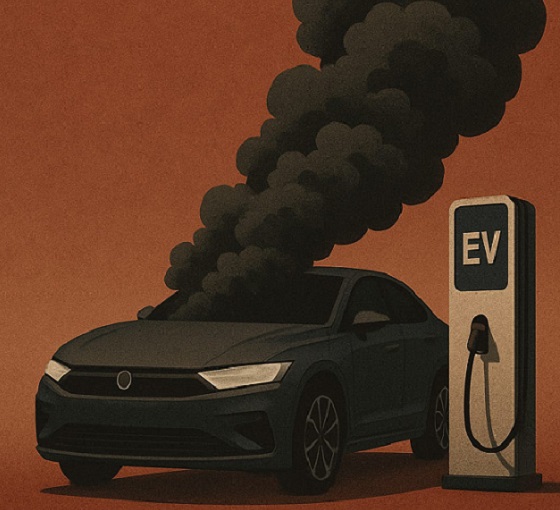
 Automotive2 days ago
Automotive2 days agoThe $50 Billion Question: EVs Never Delivered What Ottawa Promised
-

 Local Business2 days ago
Local Business2 days agoRed Deer Downtown Business Association to Wind Down Operations
-

 International2 days ago
International2 days agoTrump admin wants to help Canadian woman rethink euthanasia, Glenn Beck says
-

 C2C Journal2 days ago
C2C Journal2 days agoWisdom of Our Elders: The Contempt for Memory in Canadian Indigenous Policy
-
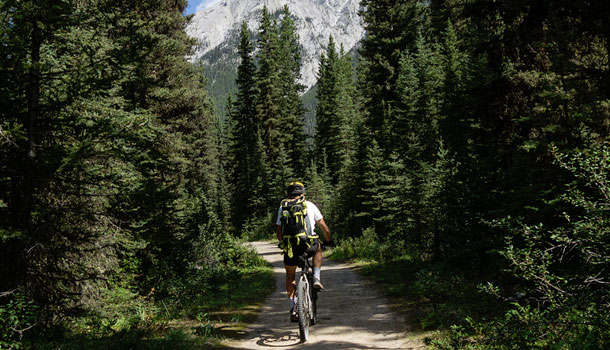
 Alberta2 days ago
Alberta2 days agoAlberta introducing three “all-season resort areas” to provide more summer activities in Alberta’s mountain parks
-
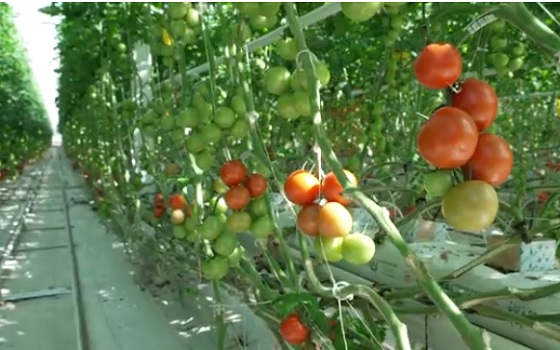
 Agriculture2 days ago
Agriculture2 days agoGrowing Alberta’s fresh food future
-
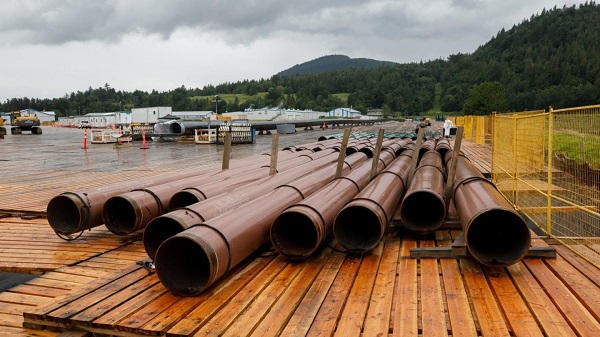
 Alberta2 days ago
Alberta2 days agoThe case for expanding Canada’s energy exports
-

 Censorship Industrial Complex2 days ago
Censorship Industrial Complex2 days agoConservative MP calls on religious leaders to oppose Liberal plan to criminalize quoting Scripture







